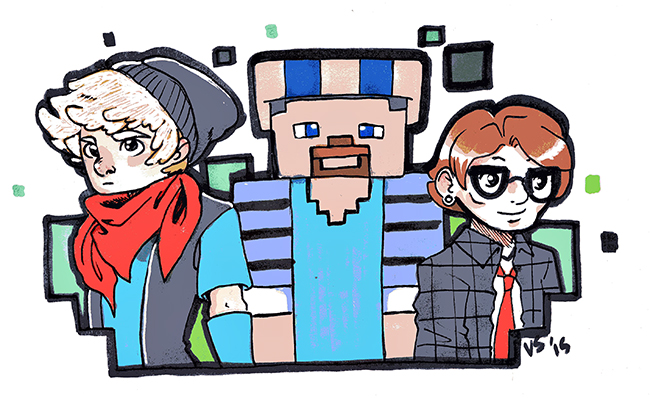With angry dad protagonists and duck assassins, indie games are the product of developers who experiment with more non-traditional content than their mainstream counterparts.
Independent games are an immaculate conception — a game with no publisher, only a developer. But large developers such as Nintendo often publish and develop their own games, making indie games tricky to define. Regardless, indie developers pride themselves on their independence, claiming to exert a level of innovation not possible with the traditional publisher-developer relationship.
Gary Gattis, founder of local games development group Spacetime Studios, said indie games are able to stray from the traditional market needs that retail games cater to.
“I think a big reason why indie games are so innovative is that they aren’t typically designed by committee,” Gattis said. “They come from individual passions which generally results in a very distinct product.”
Large developers often stick to industry standards in everything from art to mechanics, afraid to ostracize potential consumers and miss out on profit. Games such as “The Binding of Isaac” would rarely find a developer in the corporate setting — which would likely reject the unsettling idea of a crying, baby protagonist.
It would seem that with such a massive industry, diversity in game styles and design choices would be more prevalent, but developers have an increasingly limited scope because of growing development costs. With expensive technology and large development teams, studios are less likely to take risk and lose money, choosing instead to play things safe.
Radio-television-film lecturer Sheldon Pacotti, founder of indie studio New Life Interactive, said studios are now taking the path of low-risk, high-reward development, leading to the controversial yearly release cycle which sees the annual release of sequels that offer little in terms of innovation.
“There is a big financial issue,” Pacotti said. “Triple A titles are now as expensive to produce as a movie, which is a big bet. If you are going to bet that much money on a product, you have to be confident that it is going to sell a couple million units. You can’t just put out an interesting, eclectic adventure game and sell a quarter million copies.”
Indie games find their meaning not in their ability to generate revenue but through their contributions to the medium as a whole. Their bread and butter is niche markets that are more receptive to experimental game design. When these game experiments go well, they often end up trickling into the mainstream.
This phenomena has been seen in games such as “Minecraft,” which inspired an entire adventure-sandbox genre before being bought out by Microsoft for $2.5 billion and becoming a staple in the mainstream. Pacotti said he sees a mutualistic relationship between indie studios and larger developers.
“A great formula to use is to pick a type of game that everyone knows and loves and add one twist around it,” Pacotti said. “Teams that come up with that kind of formula can put out a polished piece of work that audiences can understand and develop ideas that can eventually be integrated by triple A games.”
However, despite the unconventional status of independent developers, they are now seen as the future of gaming. Gattis said he believes that indie developers have become a staple in the gaming community.
“There is a lot of noise in the market, but indie games have become vital to the evolution of the gaming industry,” Gattis said.















